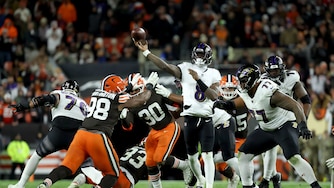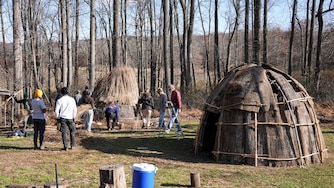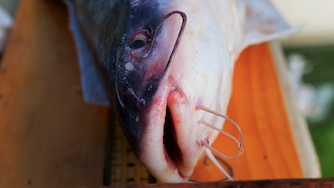It’s poetic — and sad, mostly — that on the same weekend that Brandon Young became the first pitcher the Mike Elias-led Orioles have signed as an amateur and pushed to the big leagues debuted at Camden Yards, the club’s pitching crisis compounded.
What was ultimately a proud moment for the organization came in an incredibly difficult time for the major league team itself. A lot has gone into that. Some of it is of their own making, other parts exogenous.
What’s not up for debate, though, is that the Orioles’ pitching woes are the type they ultimately would like to be able to solve internally. There are many ways in which their plan of targeting pitchers later in drafts rather than premium pick can be applauded for the progress they’ve made with some of them. Without many pushing to the majors, that feels moot at the moment.
Call it mis-matched timelines, considering in this particular moment in need they can’t fix the problem from within. Call it the best they can expect, output-wise, for what they’re putting into their pursuit of developing pitching. Certainly call this a snapshot in time, one that may not be true for much longer, given the progress they’ve made.
And to understand why the staff is currently dealing with the challenges it is, it’s worth going over the team’s attempts, failures and wins on the pitching side. It’s about value, and that goes for the development side and the major league team.
The early years
In the years before Elias and his group came to Baltimore, the Orioles used much of their draft capital on pitchers. Combine the efforts of those drafts with the pitcher-heavy returns of Dan Duquette’s tear-down trades at the 2018 trade deadline and you have an organization with plenty of pitchers but not much to speak of in terms of premium offensive talent.
Read More
Elias and assistant general manager Sig Mejdal’s preference in the draft proved to be on the hitting side. They drafted based on the draft model that came from Houston and, before it, St. Louis, with the leaders of the baseball operations department, and hitters often sifted to the top of the board based on the statistical profiles of college hitters when they picked, based on the potential value and relative certainty of development that data could provide. Pitching ended up being an under-invested area for a while in terms of draft capital.
There’s little arguing with the fruits of those early drafts, but the result was the pitching side under Chris Holt — one of Elias’ first hires after taking over — had a challenging assignment. He and the staff he brought in — including the oft-underappreciated Justin Ramsey, now at Triple-A Norfolk — were tasked with modernizing operations and getting the most out of what they had. They did.
Grayson Rodriguez and DL Hall became top-100 prospects, new methods and technology helped countless inherited pitchers improve and ultimately make the big leagues, and they put in a modern infrastructure that’s going to benefit generations of Orioles pitchers — and the organization — for years to come.
What followed, however, hasn’t exactly been a quick payoff. The 2020 minor league season being wiped out due to the coronavirus pandemic didn’t help matters, and the subsequent minor league seasons were strange ones on the pitching side. The likes of Dean Kremer, Keegan Akin and Mike Baumann were solidifying themselves in the big leagues, but the need to reign in workloads meant a few years of slow development in the lower parts of the minors. Injuries happened anyway.
Post-pandemic reset
Kyle Bradish, acquired after the 2019 season for Dylan Bundy, broke out in that 2021 season in the high minors and debuted in early 2022 for the Orioles. Other trade acquisitions from the Angels represented some of the team’s more promising arms through that post-pandemic period, including Kyle Brnovich, Zach Peek and Jean Pinto.
All ended up having elbow surgery and having their paths to the majors derailed. Young ended up hurting his elbow early in 2022 as he looked to be on the cusp of a breakout himself.
That 2022 season ended up yielding some high-level pitching talent in trades, including Cade Povich (acquired for Jorge Lopez), Chayce McDermott and Seth Johnson (who came to the Orioles in the trade that sent Trey Mancini to Houston).
These pitchers, as well as several from the 2021 and 2022 draft classes, ended up benefiting as the Orioles evolved their pitching program with new staff additions like Mitch Plassmeyer, now the team’s major league assistant pitching coach, and Forrest Herrmann, now the director of pitching development.
Third-day picks like Justin Armbruester, Alex Pham and Ryan Long from the 2021 draft proved the team could get the most out of lesser-heralded talent given they had the specific traits the organization felt they could work best with. In 2022, the talented pitchers brought in came earlier in the draft with Trace Bright and Cameron Weston, now among the more intriguing arms in the high minors, selected in the fifth and eighth rounds, respectively.
There’s also a handful of pitchers from the fledgling international program, including Luis De Leon and Keeler Morfe, who could have major league futures, but the lack of any real program in Latin America before Elias limited some of the upside the team could have realized there before now. (And it’s worth noting that Félix Bautista exists as a credit to how the Orioles bring along pitchers, with Yennier Cano and pre-2025 Cionel Pérez examples of them wringing a ton of value out of low-cost investments as well.)
A promising wave on the way
In 2023, a group of draftees including Michael Forret, Zach Fruit, Nestor German, Braxton Bragg and undrafted free agent Trey Gibson came together to represent the Orioles’ most promising group of pitching prospects yet. None, however, are terribly close to the majors, and the group of pitchers who were meant to be pushing to the majors above them alongside Young have stalled for one reason or another. Povich and McDermott debuted last year but the former is still finding his footing and the latter has one start to his name.
Bright, Pham and Long all ended 2022 at High-A Chesapeake and spent all of last year there, yet are back for a third tour this year. Armbruester struggled at Triple-A Norfolk last year and started the year in the bullpen there.
And yet the program continues to evolve. The days of every pitcher who had the ability adding a sweeper and a cutter and splitter have given way to multiple adding “death balls,” a harder, more vertical breaking ball.
It still stands to reason that the developmental process, built around adding major league-quality weapons, will eventually start producing pitchers capable of throwing them on a big league mound en masse.
How it relates to the big leagues
The top-line description of how they’re trying to do it — to derive as much value as they can without risking too much capital, draft, financial or otherwise — has carried over in the majors as well.
That explains the Jordan Lyles and Kyle Gibson signings in 2022 and 2023, respectively; two veteran pitchers on short-term deals who made exactly as much as their performance would dictate. When they traded for Cole Irvin ahead of the 2023 season, his four years of club control were the driver of that; there was a lot of value in a serviceable major league starting pitcher for that length of time, and that line of thinking remains true even if this time it didn’t work out. (I’m not sure the Trevor Rogers trade will get the same grace, in retrospect.)
And then there’s the Corbin Burnes of it all. I’ll never believe the trade was done as anything other than a reaction to Bradish’s offseason elbow injury, and the price — Hall, Joey Ortiz and a draft pick — was a steep one that, even if it stings, the Orioles know was worth it. So, too, was the $45 million a year they offered Burnes in free agency.
He declined it, and what they ended up with instead was pitchers willing to sign one-year deals who are being paid what they reasonably would be worth. There’s still hope for Tomoyuki Sugano to be worth $13 million, and every version of Charlie Morton prior to this year has been a $15-million pitcher.
They needed those two starters in free agency for a variety of reasons, including the relative lack of homegrown options. One is injuries, with Bradish and Tyler Wells both due back after midseason as they work back from elbow surgery. Another is that they missed out on the pitchers at the top of the market, and my understanding is that many of those free agents simply shunned Baltimore as a destination out of hand.
Where trades were concerned, the Orioles made their moves for this year at last year’s deadline, adding Zach Eflin and Rogers to the rotation (with the former actually contributing) and Seranthony Dominguez and Gregory Soto to the bullpen.
There are plenty of pitchers that teams would like in their farm system, but this group atop baseball operations watched their former club in Houston win a second World Series with a rotation boasting Framber Valdez and Cristian Javier in 2022 and remembered all the times the Astros could have traded them and didn’t.
That kind of value compounds if you let it. The Orioles are counting on that happening eventually, and this isn’t the place to come for any refutation of that. I think there are a lot of pitchers on the farm at the moment who will help the Orioles in some way, potentially soon.
They aren’t right now, though, and it seems like every other night, the Orioles’ pitchers aren’t giving them a chance. There’s no value to that. And since it feels like the kind of underperformance that can make the next five months of this season moot, no one wants to hear about what could happen in the next five years.
The last five explain how we got here — to a point where patience and understanding has certainly not been earned, even if it might be warranted.





Comments
Welcome to The Banner's subscriber-only commenting community. Please review our community guidelines.